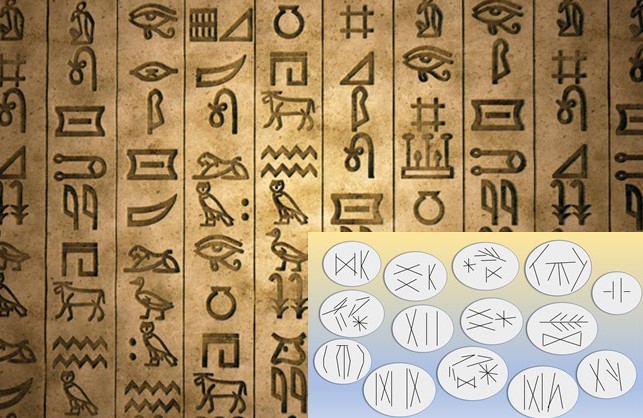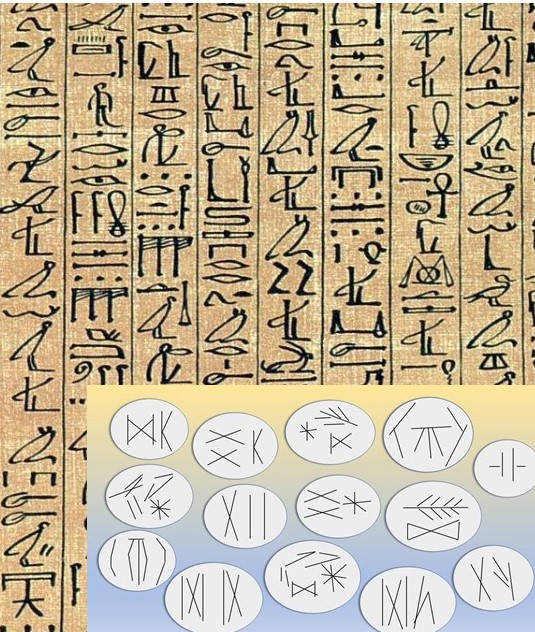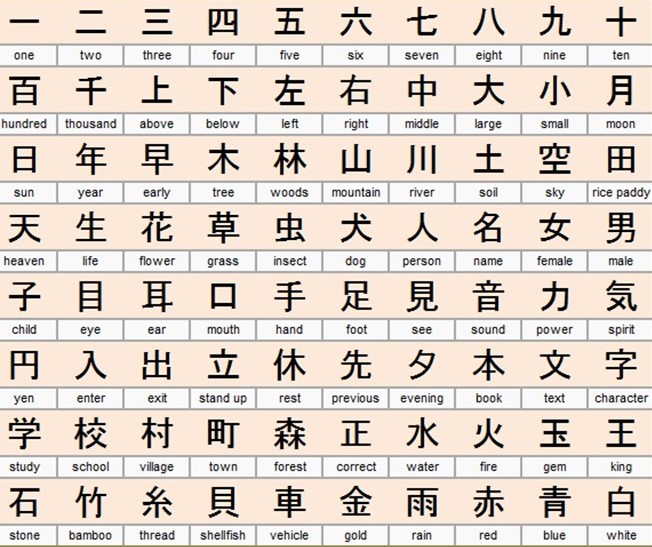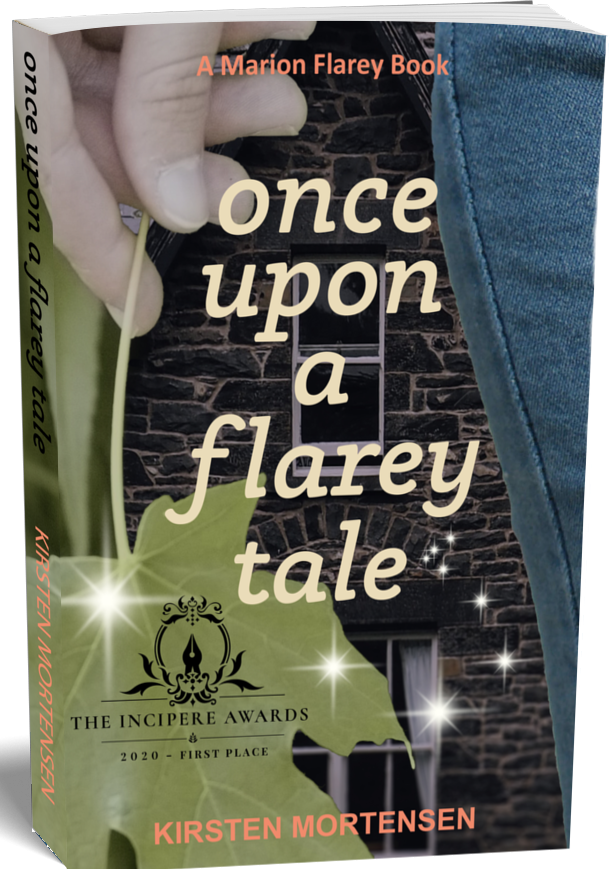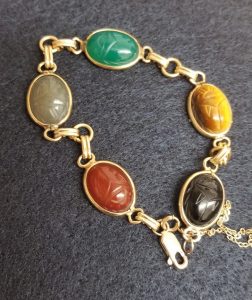
One of my absolutely favorite sites on the interwebs is etymonline.com :)
I got hooked when I went on a James Hillman kick about a year ago. Which started when I began another dream project.
I have ridiculously good dream recall. I suppose I was born with it (although I also think it’s related to being a writer — I even published a little ebook titled Writing, Dreams, and Consciousness on the topic).
Good dream recall is one of those blessing/curse things. If I commit to recording dreams every morning, it literally consumes several hours of my time — because when you remember 3-4 dreams in great detail you can easily end up with 5000+ words’ worth of writing. Needless to say this eats into my work time. It also leaves me with a perplexing mess, because although many times I “get” at least some aspect of some of my dreams, very often their message eludes me. I am convinced (call me nuts) that every single element of any dream is there for a purpose. But oh, man. Figuring out what that purpose is?

Despite these issues, several times in my life I’ve decided to suck it up, Buttercup, and record dreams. Every morning, no exceptions. And so that’s what I did, for about six straight months last year. Write ’em down, then try to interpret. And I found Hillman, and fell hard because he is (was) a Jungian with a lovely touch when it comes to dream interpretation.
My absolutely favorite Hillman book is his Animal Presences, which deals with animals in dreams.
And yes, this post is actually about scarab bracelets.
I started collecting them after I dreamed I had purchased one.
Not that I recommend acting out your dreams in 3D reality, despite the fact that the Native American peoples, the Haudenosaunee (Iroquois), did exactly that; I’m sure they were on to something, but someday I’ll tell the story of what happened to me, one time — I was young and stupid, realized I was re-living a dream scenario and grabbed it, a bit too literally, by the pointy end of the stick. I rather made a fool of myself. Ouch. Also, this will be a story that is released only after I’m dead hahahahaha — yes I’m still embarrassed by it!
Back to Hillman: one of the cool things he does to enrich dream interpretation is consider the etymology of the words we use as we articulate / label a dream’s visuals. Sometimes looking at dreams this way can lead to apparent dead ends, in my experience, but other times it can be quite revealing — dreams often use “word play” — if you dream about a bee, it might “be” about “being,” for example. And if you push at dreams this way, you can sometimes start to feel them as a kind of language. “The symbol communes,” writes Jeffrey Kripal in The Flip. You start to feel dreams as a language the way you start to think in a foreign language once you’ve truly begun to learn it.
So that’s how I came to etymonline.com and became a regular visitor, not only when I noodle dreams but when I write, and want to dig precisely into the nuances of a particular word.
Link, linking, linked
This morning I looked up bracelet. Not hugely interesting, to be honest:
“ornamental ring or clasped chain for the wrist,” mid-15c., from Old French bracelet (14c.), diminutive of bracel, from Latin bracchiale “armlet,” from bracchium “an arm, a forearm,” from Greek brakhion “an arm” (see brachio-).
But our scarab bracelets aren’t armlets. They’re link bracelets — and things do warm up if you move to the idea of links and linking.
There is no Old English work for “link.” The word appears to be Scandanavian originally. However, there are a couple of German relatives: “Gelenk”, which means “articulation, a joint of the body; a link, ring,” and the Proto-Germanic word “khlink,” which is the source of the German word “lenken:” “to bend, turn, lead.”
I love this, because it reminds us that links are connectors but also relate to flexibility (bending) and process (leading).
So how about this — call it a thought of the day: we sometimes seem to horribly separated from everything — from each other, from Spirit, from understanding — but perhaps we are more linked than we realize. Perhaps what we perceive as separation is actually a bending. The link is there, we’re just not able to “see around the corner” to understand where, exactly, we’re being led. We just need to trust it.
In any case, my posts about scarab bracelets are linking me to people I’d otherwise never meet.
Coincidence? Or spooky symbols at a distance?
:)
And some of you are sending me emails and sharing your experiences with these funny little bracelets. And also pictures, which is a delight, and which I get to share, now — another delight :)
So on to the bracelets …

Starting with this picture of the back of the bracelet I shared at the top of this post. The bracelet’s owner also made a sketch of the markings on the back of one of the scarabs. Although the two leftmost markings are familiar, the other three are completely new to (see here for sketches I made of the markings on my bracelets).
Another reader sent me some pics of an interesting variation of the scarab bracelet style.

The cabochons on this bracelet are set on a diagonal … I’ve never seen a bracelet with this design. And I must say, if I were to come across a bracelet styled like this on ebay or etsy, I’d be very tempted to buy it — just because it is so unusual :)
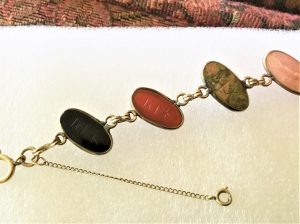
She also sent me a pic of that bracelet flipped over — and here we go, those familiar “hieroglyphs” — basically identical to the marks carved on several of my bracelets.
Which once again suggests that these stones were all being sourced from a small number of producers …
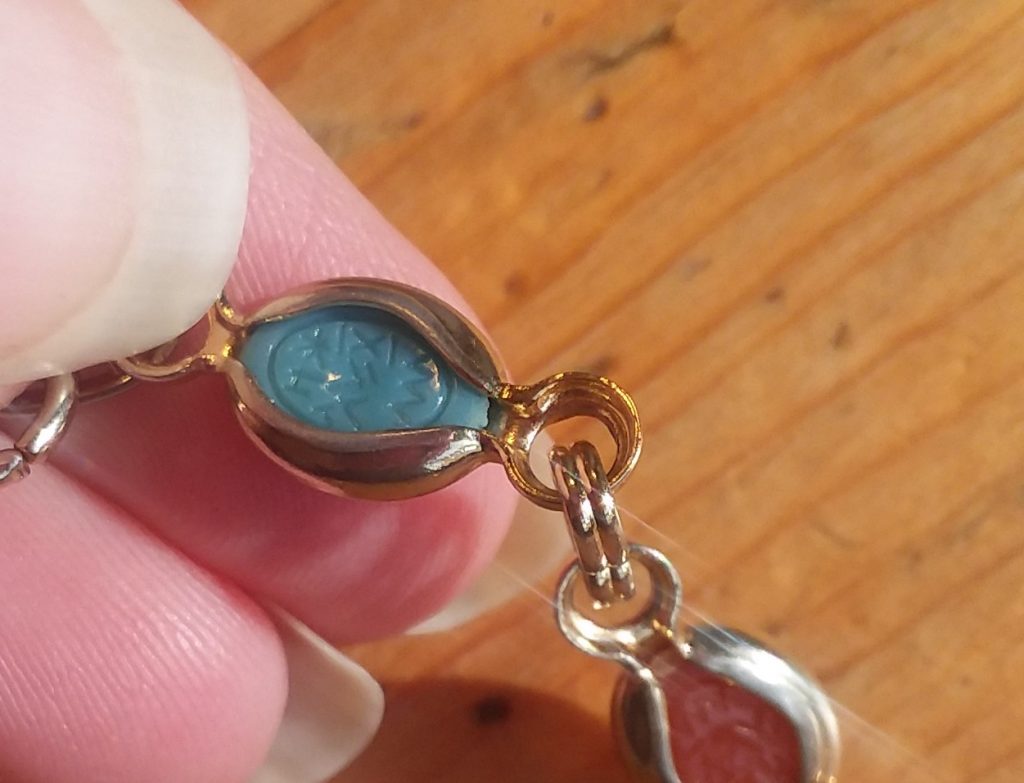
That said, there are bracelets out there with stones that are made of glass or other materials. Another set of pictures one of my readers sent is a bracelet with stones that appear to have been molded rather than carved.
Here’s a close-up of one of the cabochons.
The setting is really pretty though, isn’t it? And the designer made sure that you could see the “hieroglyphs” :)

Here’s a top view of that same bracelet. It reminds me in design of the one I own with the small stones, which I love to wear when I’m looking for something a little lighter and more delicate.
So that’s it for now but please, if you own one of these, I’d love to see and share more photos!
Thanks for reading :)

P.S. for convenience: if you haven’t seen them yet, my first post about these bracelets is here, and I posted about the “hieroglyphics” here.
Pssst! Do you read romance novels?
Subscribe to my e-newsletter and I’ll send you a free e-copy of my upcoming novel, Once Upon a Flarey Tale!




